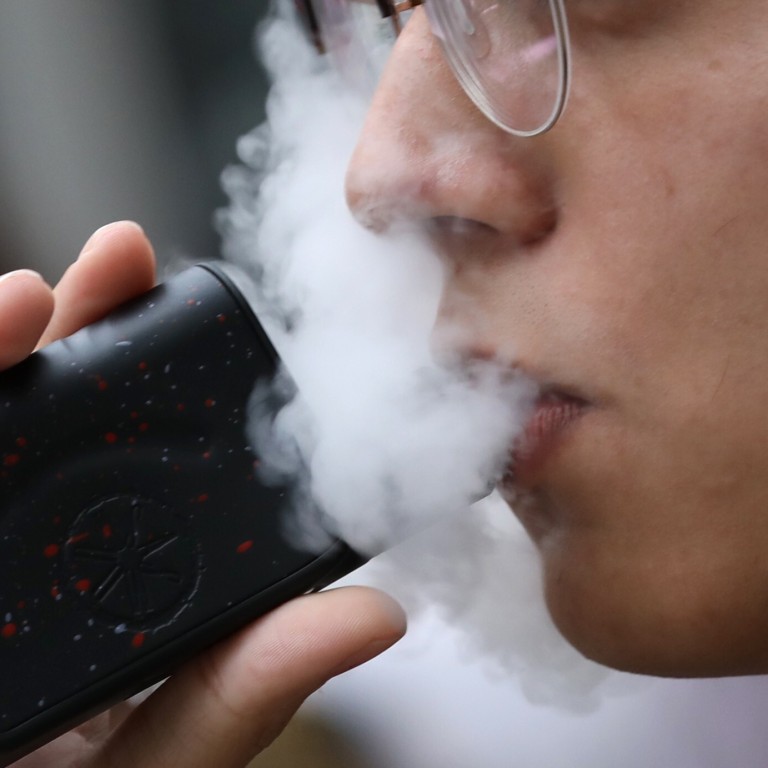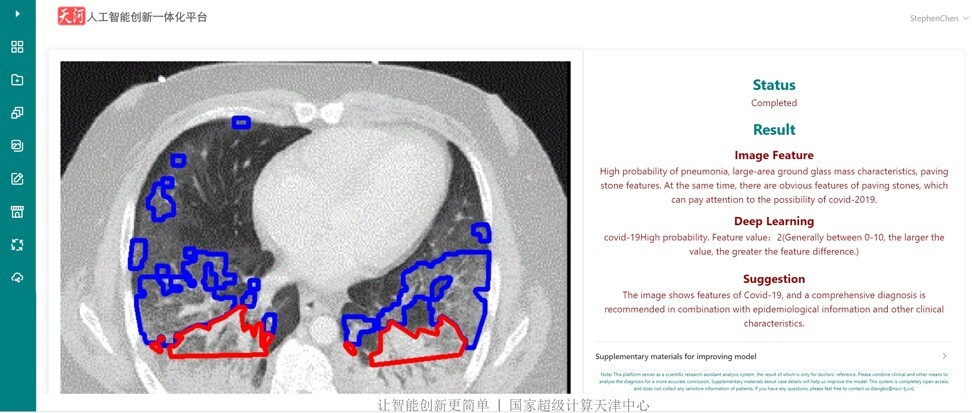
Chinese supercomputer and American doctors clash over AI coronavirus diagnosis of young US vaper
- China’s Tianhe-1 machine says white patches detected on lungs suggest probable Covid-19
- But North Carolina doctor says five patients with similar symptoms were not evidence of an earlier outbreak
The features included white patches encroaching on the lower parts of both lungs, a phenomenon raising the eyebrows of some radiologists at the early stage of the outbreak because it was rarely seen in other types of pneumonia.
“The image shows features of Covid-19, and a comprehensive diagnosis is recommended in combination with epidemiological information and other clinical characteristics,” said the report generated by artificial intelligence.
The patient was one of five people who showed up at the WakeMed Hospital in Raleigh, North Carolina, at about the same time, with acute lung injuries, according to information on the website of the US Centres for Disease Control and Prevention.
Aged between 18 and 35 years, the five patients experienced similar symptoms, including shortness of breath, nausea, vomiting, uncomfortable stomach and fever.
“All five patients were hospitalised for hypoxemic respiratory failure; three required intensive care for acute respiratory distress syndrome, one of whom required intubation and mechanical ventilation,” said the US CDC’s Morbidity and Mortality Weekly Report.
Doctors ran tests for influenza and other known pathogens to identify the cause of infection, and the results came back negative.
All patients survived and their cases were added by the US CDC into a pool of hundreds of patients “potentially associated with vaping”, or the smoking of electronic cigarettes, that occurred last year. Vaping has increased rapidly in the US in recent years.

Dr Kevin Davidson, who led a medical team that examined these patients at WakeMed, defended the original diagnosis.
The Chinese supercomputer could have made a mistake, according to Davidson, because the features it identified in the CAT images were not unique at all.
“This finding on chest [CAT] of alveolar ground glass infiltrates is highly non-specific and is seen in many types of infections,” he wrote in an email response.
Other viral infections, acute lung injury from inhalant or drug toxicity, autoimmune lung disease and some environmental exposures could result in similar patterns, according to Davidson. What Tianhe identified could therefore be an “overlap” between Covid-19 and vaping patients.
AI could help identify coronavirus patients at greatest risk
Davidson added that there was no evidence suggesting the five patients were connected to a single source of contagious outbreak, and they saw no sign of community spread in the neighbourhoods.
“Our cases occurred in summer 2019, were not clustered into groupings as would be expected with communicable disease,” he said. And they “have rapidly dissipated without any recurrence”.
Davidson said the hospital was now overwhelmed by Covid-19 patients. He did not respond to a request for more data about the patients.
Though the outbreak was first detected in Wuhan, some scientists believe the virus might have spread quietly among humans before triggering the current global pandemic.
Dr Francis Collins, director of the US National Institutes of Health, said one possible scenario was that the new coronavirus crossed from animals into humans years ago before it became capable of causing the human disease.
Chinese specialists to share Hubei experience with Philippine doctors
“Then, as a result of gradual evolutionary changes over years or perhaps decades, the virus eventually gained the ability to spread from human to human and cause serious, often life-threatening disease,” he wrote in an article posted on the institute’s website last month.
One reason scientists think this might be the case is that some genes allowing the new coronavirus to bind with human cells with super-efficiency are not found in viruses on the animal hosts.
But they are found in some viruses in humans, such as Aids and Ebola, suggesting the possibility of continuous adaptation through repeated and small-cluster outbreaks in human societies.
China has made large-scale use of artificial intelligence technology to help doctors identify coronavirus patients. These systems have reached accuracy as high as 96 per cent and were used to correct false negative test results that happened often to oral swabs, according to scientists involved in the projects.
The doctor said AI was accurate and fast and “improved day by day”. However, she added that AI could also make mistakes so humans should make final decisions.
The disagreement between Tianhe and the WakeMed team could be resolved in a laboratory testing for the new coronavirus in the patient’s samples, said the Wuhan doctor who declined to be named.
“If the samples are no longer available, an antibody test can be performed instead,” she added.
Sign up now and get a 10% discount (original price US$400) off the China AI Report 2020 by SCMP Research. Learn about the AI ambitions of Alibaba, Baidu & JD.com through our in-depth case studies, and explore new applications of AI across industries. The report also includes exclusive access to webinars to interact with C-level executives from leading China AI companies (via live Q&A sessions). Offer valid until 31 May 2020.


